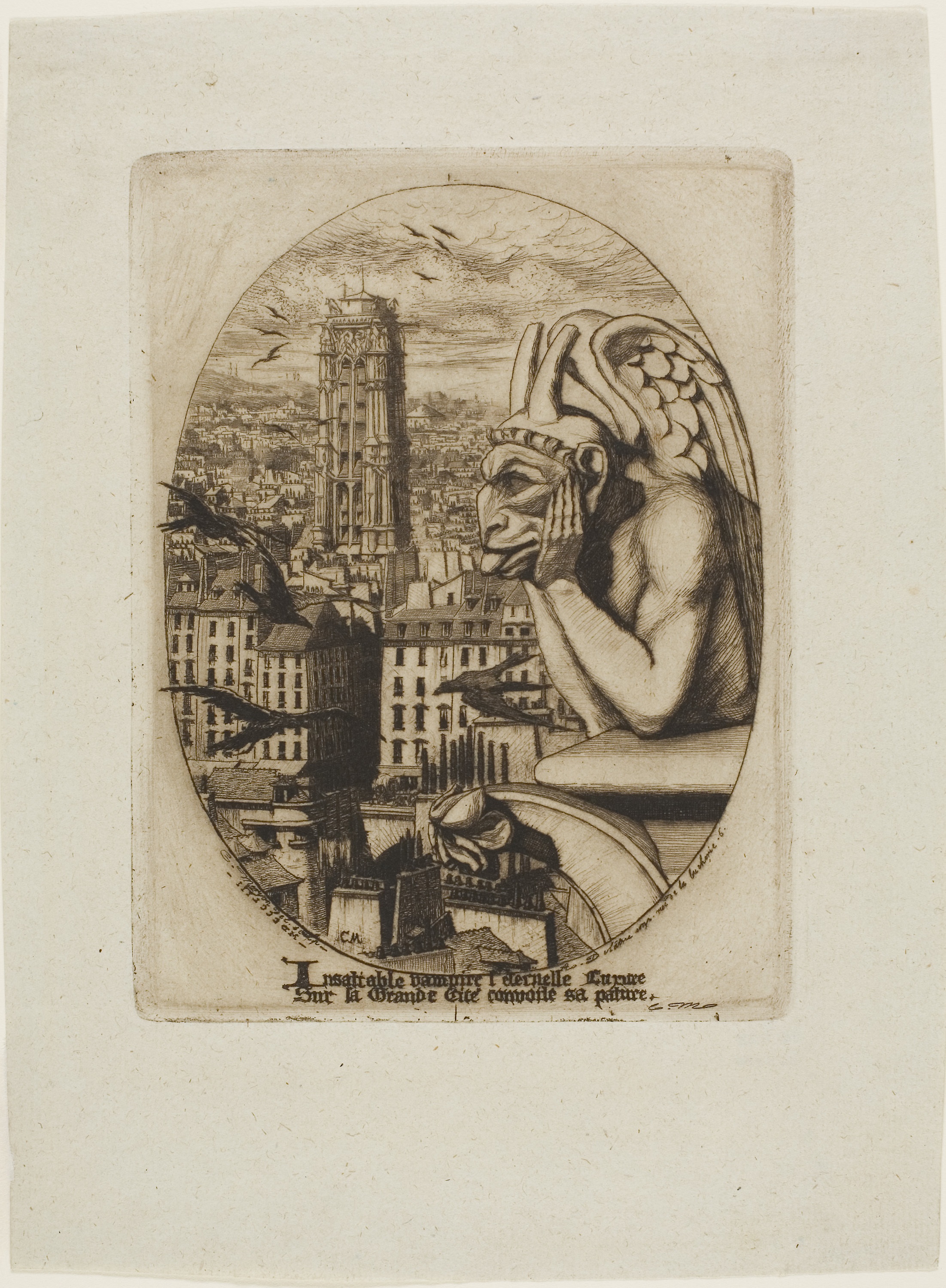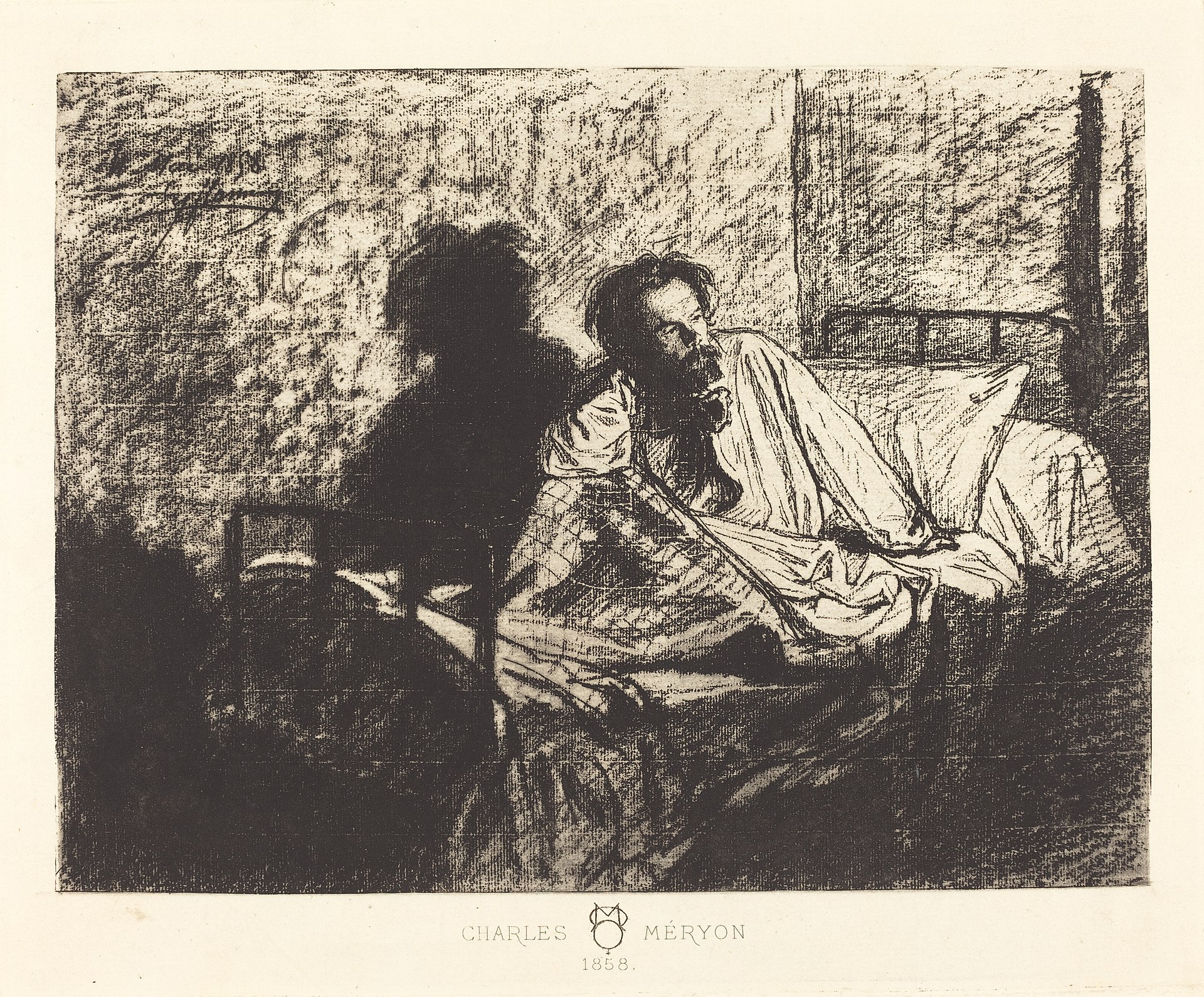Charles Méryon (1821-1868) climbed Notre-Dame de Paris’s towers to capture this view during a period of restoration and renovation. Between 1843 and 1864, Eugène-Emmanuel Viollet-le-Duc (1814–1879) planned and oversaw a massive campaign to salvage the decaying cathedral. His work created Notre-Dame as we knew it until the fire in 2019.
The project included 54 monstrous statues, often called chimeras, which Viollet-le-Duc designed for the cathedral’s two towers. The particular chimera Méryon depicted has become the most famous. This iconic grotesque holds his head in his hands and sticks out his tongue as he looks out at Paris below him. Méryon’s etching quickly became popular, and it likely helped make this figure a worldwide symbol of Notre-Dame and of Paris in general.
Méryon’s etching shows the famous chimera, which he called le Stryge (the Vampire), in an oval view with Paris unfolding beside him and the Tour Saint-Jacques in the background. Dark birds circling the image give the composition a sinister vibe.
This print exists in ten states (versions), each slightly different from the others. This version from the Art Institute of Chicago is an example of the fifth state, and it includes Méryon’s two lines of verse about the figure: “Insatiable vampire l’éternelle Luxure; Sur la Grande Cité convoite sa pâture.” (“Insatiable vampire, Eternal Lust; Over the great city desiring its food.”)
- Alexandra Kiely
P.S. Check here our five fun facts about gargoyles—those quirky creatures found on old churches. : )


 Charles Méryon
Charles Méryon